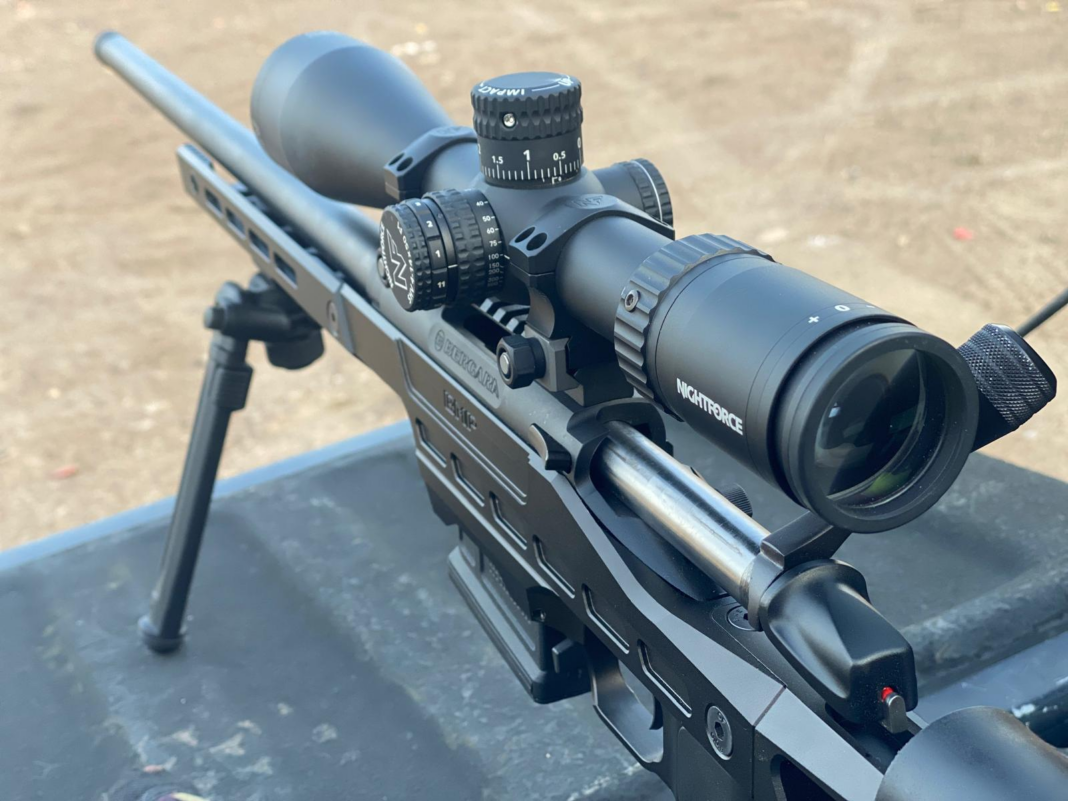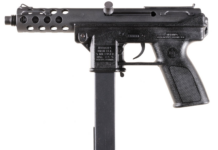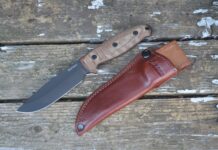Continued From Part 1
Mil-XT MRAD Grid
The actual working feature of the Mil-XT reticle is its grid, which sits below the main horizontal stadia line. At first glance, the Mil-XT’s MRAD grid reminded me somewhat of the classic Horus H58 reticle (my first stepping-stone to grid-based precision reticles many years ago). The Mil-XT’s grid is more straightforward and simpler.
Nightforce did a great job marking the Mil-XT’d grid along with its horizontal and vertical stadia lines with clear hashes that are evenly spaced 1 mil apart. No matter one’s skill level or experience with optics, the Mil-XT reticle and grid make it easy for anyone to pick up on these primary 1 mil wide hold lines.
Every full mil hold line, whether vertical or horizontal, is clearly numbered with easy-to-see numbers. It’s one of my favorite details about the Mil-XT reticle, especially on the principal horizontal stadia line.
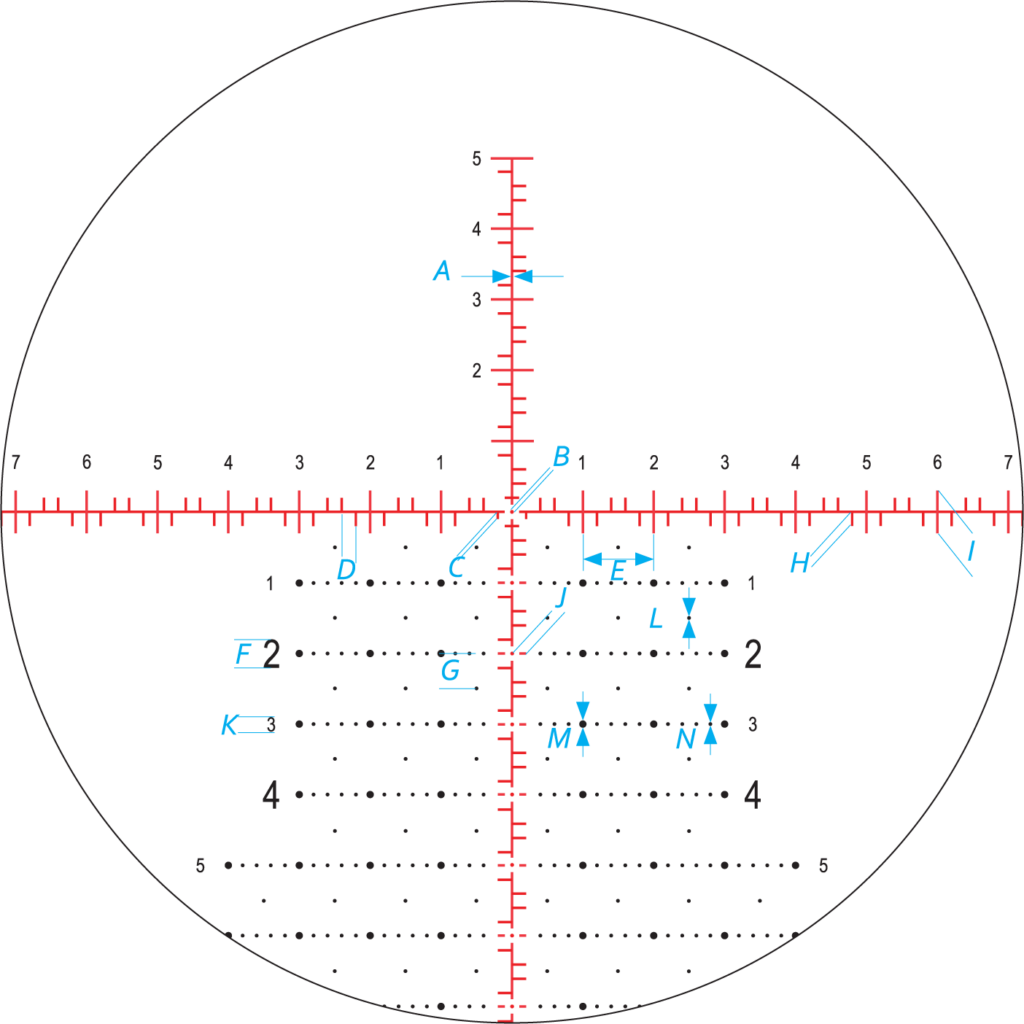
Segmented Stadia Lines
Beyond the main mil wide spacing, the main vertical and horizontal stadia lines are further segmented by 0.2 mil hash marks from end to end. This essentially breaks down each 1 mil wide section into fifths. Spacing hashes and hold marks at 0.2 mils is very practical, as fifths of a whole are “finer” than quarters. But they’re also not overly fine either, to the point of being counter-productive, like tenths.
Every other horizontal stadia line besides the primary one on the Mil-XT reticle is completely composed of 0.2 mil spaced dots measuring 0.05 mil wide. On these stadia lines, every fifth dot is a bolder 0.1 mil, making it easy for the shooter to connect any two of these bolder dots and recognize a full 1 mil wide space. Because they’re spaced 1-mil wide apart, more advanced shooters can get away with using these as wind dots if need be.
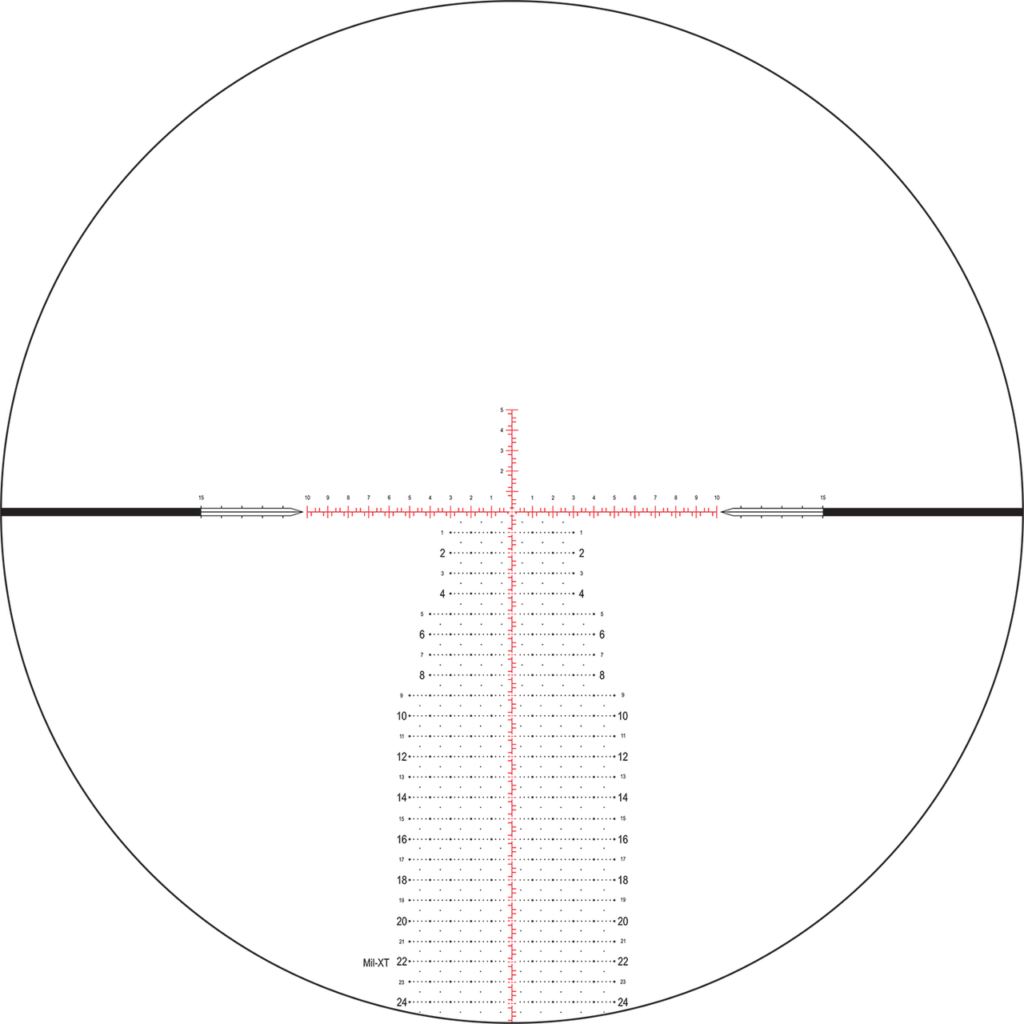
Fractions Of Mils And Sub-Grids
Dividing whole mils into fifths is convenient for many reasons, from making corrections on the fly or using the reticle to range a target. However, as large as halves are, they have their place too. So, the Mil-XT incorporates a “lightweight” skeleton sub-grid of equally spaced 0.05 mil wide dots (same size as central aiming point) at every 0.5 mil interval for this reason.
This secondary grid is very easy to see because its dots are only found at 0.5 mil spacing in between the horizontal or vertical numbers associated with whole mils.
Ringing Steel In The High Desert
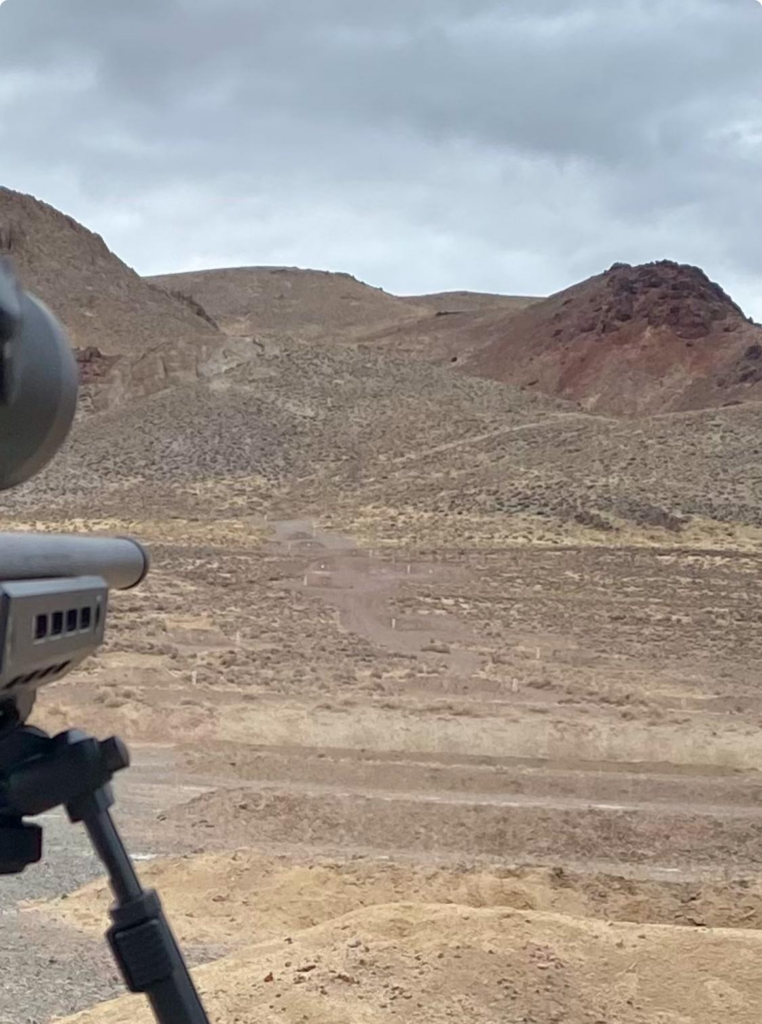
Back to this humble county range in the High Desert of the American West…
After capturing a baseline muzzle velocity figure with the “new” Garmin chrono and also with a little help from a ballistic solver, we took turns shooting the 400, 450, 500, 600, and 700-yard steel targets. Elevation-wise, the DOPE was only about .10 mil off in any case. When it comes to wind, however, there’s no feedback like actual experience or watching the splash or impact through the scope or spotting scope, regardless of what an app says.
I’m working on the experience bit. The onus behind writing this article and getting out there to send lead at distance has actually been a huge boon towards my hands-on rifle experience.
Because it’s my luck, every time I deliberately make a plan to shoot rifles, the wind is beyond terrible.
My first outing (I ended up going back to shoot some more in between drafting these) to ring steel with the 6.5 mm Creedmoor Bergara BMP target rifle was no exception. That late morning and early afternoon, the rifle range was swept by a consistent easterly wind with speeds ranging from 20-30 mph. Not to mention the 47 mph gusts that blew away my target stand and zeroing targets into the desert.
After correcting the zero for the 1.8 mils in elevation, I had to dial an additional 0.5 mils to the left at 100 yards just to be square. That won’t stop the wind from playing games with the .44 G1 BC (ballistic coefficient) bullets in flight, especially at further distances.
Wind Games And Spin Drift
It was while trying to figure out that day’s wind holds for those five distances that I truly came to embrace the utility and simplicity of the Nightforce Mil-XT reticle and its grid. There’s also the instance of bullet spin drift if shooting at long enough distances. Having clear horizontal hashmarks for windage holds or bracketing makes it easy to account for this spin drift.
The image below, which focuses on the primary horizontal stadia line with its 1 mil wide and 0.2 mil divisions, is what I’m talking about. Having been (un)fortunate to shoot in strong wind, using this horizontal line was mandatory. Dialing would have been futile and too slow, anyway.

Bullet spin drift, a topic deserving of its own series of articles, is simply a bullet’s tendency to veer off to one side at extended distances. Most barrels’ rifling cuts into bullets with a clockwise (right side) spin. After leaving the muzzle and during flight, bullets are still spinning in that same direction as they travel through the air. Over time, usually, after the bullet has been traveling past several hundred yards, the spinning force imparts a bias in that same direction (again, typically towards the right since most rifling spirals clockwise).
The degree of the bullet’s deviation from its original path depends on several different factors. Overcoming spin drift usually relies on holding the sight picture to the left to some extent. I found that holding laterally with the Nightforce Mil-XT reticle was very intuitive and easy to do.

